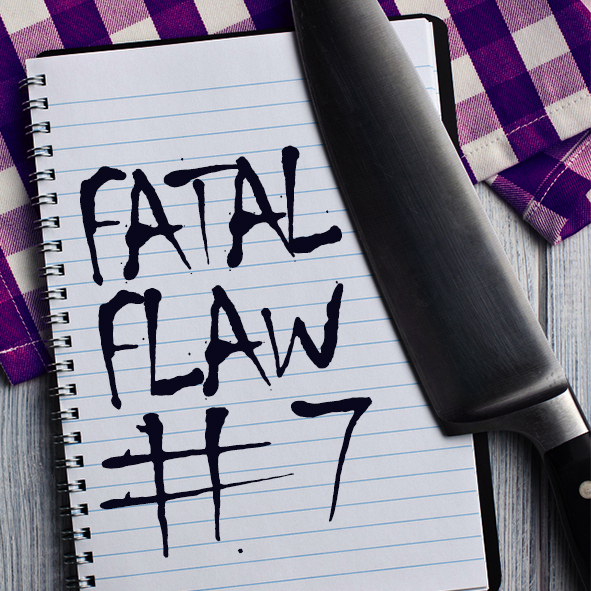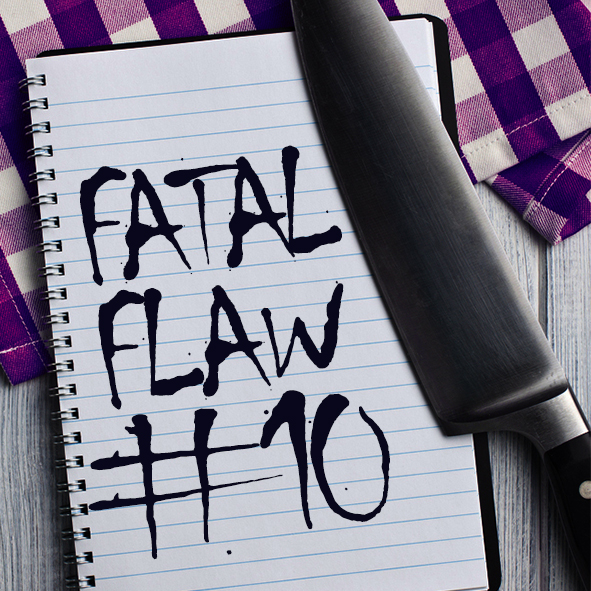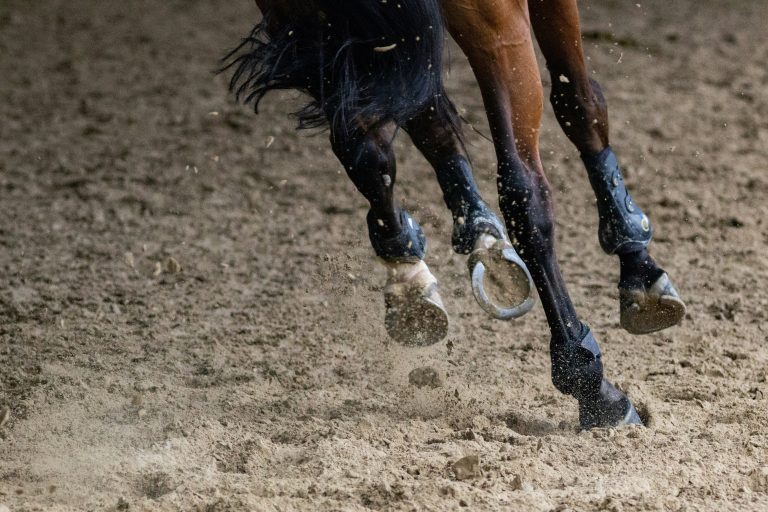3 Ways to Test the Tension and Pacing in Your Scenes
This week editor Linda Clare continues our look into Fatal Flaw #7—Lack of Pacing and Tension. Infusing our fiction with strong pacing and gripping tension has much to do with leaving out boring bits and keeping readers riveted to compelling characters. It’s not just about plot.
Last week editor Rachel Starr Thomson introduced our month’s look at Fatal Flaw #7 —Lack of Pacing and Tension, and we saw how the choice of words and rhythm of sentences can affect pacing and tension.
This week, let’s take a look at the ways pacing and tension play out at the scene level. Your first draft may contain lots of unnecessary scenes. But when you revise, test your draft against these three points when deciding if a scene should stay or be cut (or reworked).
Five Easy Plot Points
Whether you’re a plotter or a pantster, there will come a time when you need to be sure you maintain tension in the story by identifying the five most important scenes in the entire story. These scenes are often called PLOT POINTS—scenes that radically alter the course of the story.
If you aren’t sure how to identify a plot-point scene, you might try writing one summary sentence for each scene in your story. I have counseled my students to use three-by-five cards or sticky notes, to enable them to string the story in a timeline, then stand back to see the way the story moves. When you see the forest instead of the trees, you get a better idea of the pacing and tension.
Identify the five pivotal scenes that cause your protagonist to either advance toward the goal, be thwarted in that movement, or take action to get around the obstacle. They are likely to be
- the inciting incident,
- the first time “things get worse,”
- the “worse still” scene,
- a no good awful even worse situation,
- and of course the do or die scene called the climax.
There may be other tense scenes, but these five are the main ones that illustrate the struggle to gain the story’s goal.
But I Researched That!
As you write your summary sentence for each scene, you may notice that somehow you’ve written a scene (or three) that seems to march in place—a scene that doesn’t add to the tension, releases too much tension, or has too many details or explanations.
Writers who love research often fall into this trap (I know I do!). You researched this really cool stuff, and you’ve got to get the info in there some way. If your character visits an exotic locale, your setting is historical or maybe even futuristic, it’s easy to allow the fun facts to quietly smother the tension. If your tension dies, your pacing is on life support.
One of the most helpful tricks I know is to Resist the Urge to Explain, or RUE. You might know a lot of fascinating stuff, but in order to keep tension building, you’ll need to be sure that stuff is a vital part of the character’s struggle in any given moment.
Skip the Boring Stuff
The late great writing teacher Gary Provost advised that novelists don’t have to account for every moment of a character’s life. In terms of tension and pacing, this means only scenes that concern the story goal should be acted out. If nothing (apropos to the story) happens over a character’s weekend, don’t write a scene that makes readers live through it.
Likewise, in scenes, you don’t need to chronicle every motion. I think you can safely assume “she reached out her hand” if you write “she shook his hand.” The same is true for nodding one’s head (what else do you nod?), putting on one’s hat on one’s head (ditto) or turning to face someone (just write he faced her).
I once read a student novel in which every chapter’s opening the character hears the alarm clock, puts on fuzzy slippers, and goes downstairs for coffee. Unless you’re writing a variation of Groundhog Day, these are the things you can usually safely omit. You’ll help build tension and improve your pacing.
For our Before and After scenes, let’s bring back Lady W and dear Lord Havemuch.
Before:
Lady W sat at her dressing table, combing her silken hair. Only a very few subjects in the Queen’s realm received invitations to the royal Garden Party, the party that had been going on annually in England for 145 years since Queen Victoria’s time. Queen Elizabeth always wore a matching dress, coat, hat, and gloves. Lady W wondered if she should wear the peach-colored satin or the dowdy pin-tucked cotton. Lord Havemuch had spilled tea on her favorite gown, the ivory frock with matching hat and gloves, so Lady W was going to have Zelda the maid come in and alter both of her mistress’s other choices. That Lord Havemuch!
Lady W reached out a hand and picked up her silver-handled mirror. There was a bare spot on the mirror, a worn place that always reminded Lady W of her mother. That trip to the Grecian Isles last summer was the last excursion Mum had taken with her daughter. Lady W had snorted with laughter at how hard it had been to get her mother’s corset laced up. Why, Lady W had to use a well-placed boot to get the laces tightened. She chuckled. What a jolly holiday that had been and so much good food.
She put the mirror back on the dressing table just as Zelda was coming in.
“Pardon me, missus,” Zelda said, curtsying deeply. “Will you be taking your breakfast in your room again?”
Lady W sighed loudly and pointed with her forefinger. “Yes, Zelda, you may place my tray just over there.” Right then and there she decided to send a cleaning bill to Lord Havemuch for the ivory gown. She really preferred it to the peach or the pin-tuck.
And here’s After:
Lady W sat at her dressing table, combing her silken hair. She wouldn’t panic—not yet anyway. The royal Garden Party was tomorrow. But Lady W hadn’t a thing to wear—thanks to Lord Havemuch, the boob who’d ruined her ivory ensemble. But Lady W only had two gowns left that she could still squeeze herself into—a very tight peach satin gown or a miserable pin-tucked cotton frock.
Zelda, the maid knocked. “G’morning, missus.” She curtsied, balancing a breakfast tray. “Will you be taking breakfast in your room again?”
Lady W sighed. “Yes, set it there. Oh, Zelda, whatever will I do? The Garden Party is tomorrow, and I’ve nothing to wear.” She blinked back tears. “Since Lord Havemuch—that clumsy oaf—ruined my ivory frock, I’ve been tied up in knots.” She stuffed an entire scone, bursting with orange zest, into her mouth. “You’re my only hope. Can’t you alter one of my other gowns?” Lady W tried to suck in her tummy, but it was no use. A second scone would help her forget her bulk.
“Course I can, m’lady.” Zelda picked up the silver-handled mirror and held it up for Lady W. “May I suggest I let out the peach satin? I can make it much. . . uh . . . roomier.”
“Roomier?” Lady W scowled at her reflection. The mirror’s bald spot couldn’t hide those puffy jowls, or how snug the peach gown had become. Why, she’d end up with a boot on her backside, just to get her corset laced. She whipped around, sending the mirror crashing to the floor.
“Absolutely not the peach! I’d rather see Havemuch go bankrupt paying for my ivory ensemble!”
In the Before scene, I’ve allowed Lady W to think about her dress for the party without revealing the true conflict: that she’s grown too pudgy to wear the peach gown. I inserted a couple of fascinating facts about the real monarchy to add “historical detail.” Lady W is just living moment to moment. I explain the whole incident with Lord Havemuch and also included some backstory about Mum to explain the family tendency to be overweight. And I deliberately wrote “she reached out her hand” to show her picking up the mirror.
In the After scene, we understand that the tension is all about Lady W’s inability to fit into her dress. I omit the facts about England’s monarchy, which take us out of the story and do nothing to build tension. Instead, things build logically, from Lady W sheepishly thinking about what to wear, all the way to her rage as Zelda the maid suggests the obvious. No history, backstory, or explanations necessary.
So, as you go through your scenes, be sure you have the essential five plot points well defined, then ensure each scene (not just these but all the scenes in your novel) contains only the bits essential to set the tone and provide enough “color” and information to reveal character and advance the plot. Resist that urge to explain (which brings us back to our in-depth look at show, don’t tell last month). At the micro level, eliminate excessive words that bog down your prose. If you do this, your pacing and tension will ramp up.
Your Turn:
How do you decide whether to include or cut scenes from a work-in-progress? How difficult is it for you to weave in historical or other facts without slowing the pace? How do you deal with it?










In historical fiction those “boring” bits are “interesting” gems to the reader, (or, at least to me.) The royal Garden Party has been going on for 145 years? Fascinating.
My favorite author is James Michener. Sometimes in his stories he steps out of character, and writes a few paragraphs of history relevant to that point in his novel, only to Segway back into the story. But then, not many of us are James Michener’s!
One way I am weaving historical facts into the second draft of my novel is to have the POV character say them, or think them, or if it is a historical custom, for example, to take part in it. But I treat these fun facts like seasoning: adding only a little bit, as necessary. Pacing is still the primary concern.
This (like each of these posts) is incredibly helpful! My question is what to do about RUE when it comes to world-building in fantasy stories? I am writing a YA contemporary fantasy novel in which my protagonist discovers that she is part of an ancient order of individuals who were bestowed with a unique power to fight a growing evil. We learn about this secret world alongside the protagonist, so I’ve had a difficult time not overloading the reader with details that my protagonist would clearly want to know right away, but is not necessarily vital at that exact moment in the story. For example, when she learns she has powers wouldn’t she want to know where those powers came from? Why she has them? What it all means and where it fits in to her current understanding of the world? But giving her an explanation of the Order’s history and background in the form of dialogue would slow down the pace. I’ve spread it out, but it’s still a lot of information to cover. The same problem arises when she is training on how to use her new powers. I have several scenes in a row that seem to march in place with her just learning how to do things. But they are necessary to establish at the beginning, and they are things no one can do, so I feel it’s necessary to explore in detail how it works in order to give credibility to the world I’m building. How do I balance RUE and world building?
Like any other story, background info should be sprinkled in. If you haven’t read all the posts in the month we covered backstory, that would be helpful. The tendency with fantasy writers especially is to do huge info dumps, since there is a lot of world building to do. Best thing you can do is grab about 5-10 of the best novels in your subgenre by authors you think do this well. Then use a yellow highlighter and highlight every line (narrative, direct thought, dialog) that builds the world and backstory. Using the rule of three Linda Clare wrote about in an earlier post will help you see how to do this as well. Showing your character in her world, in active scenes, in dialog, is the best way to show this world she is in and her place in it.